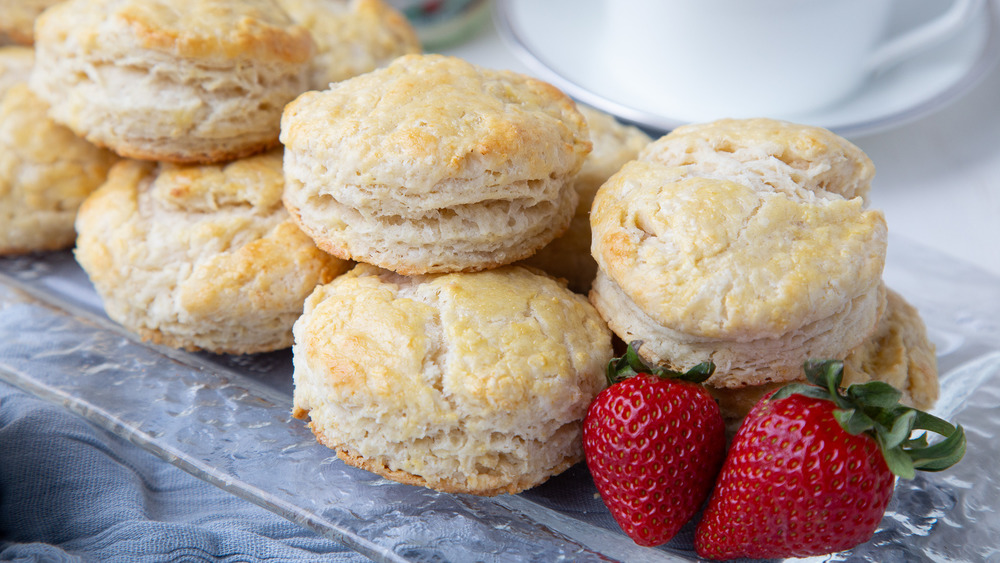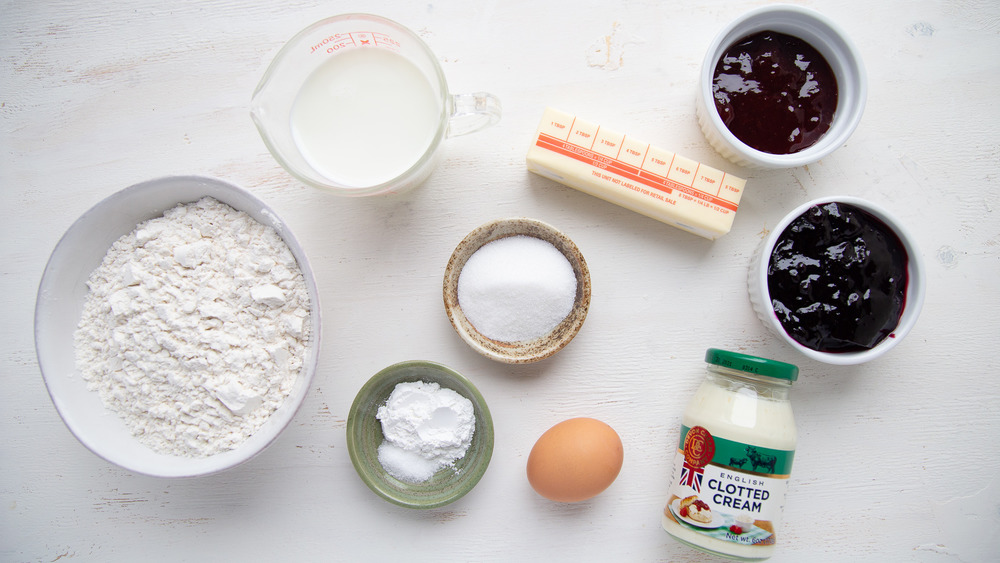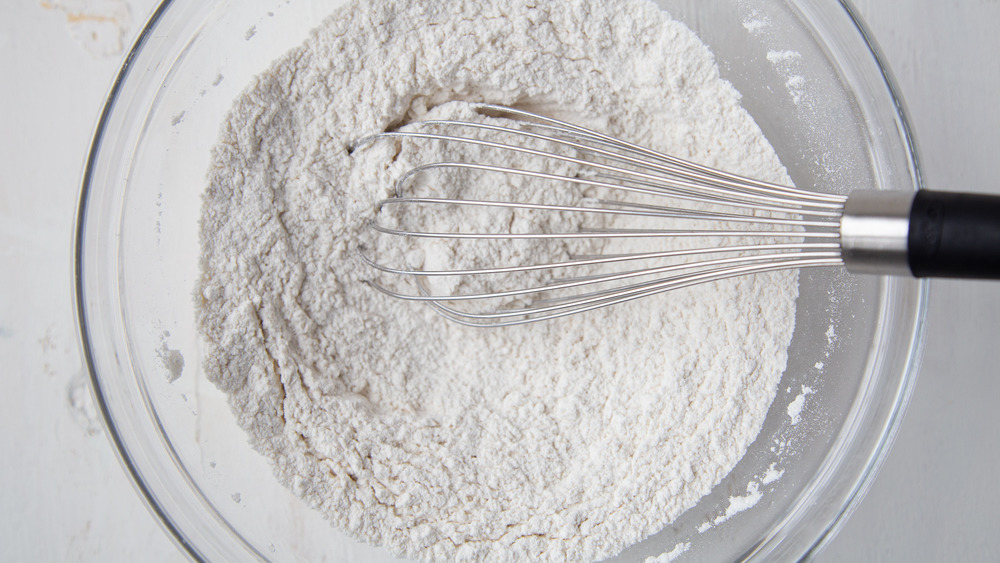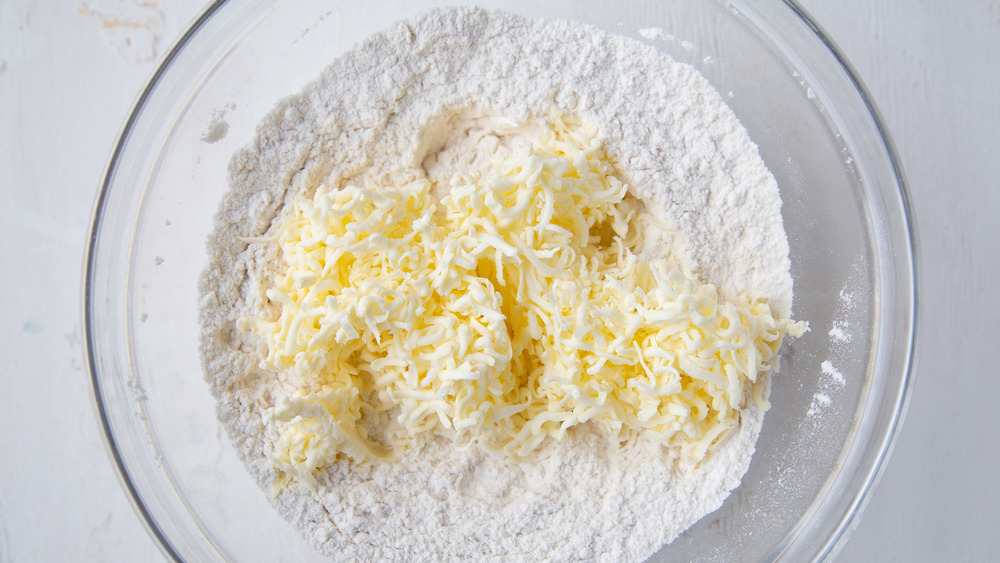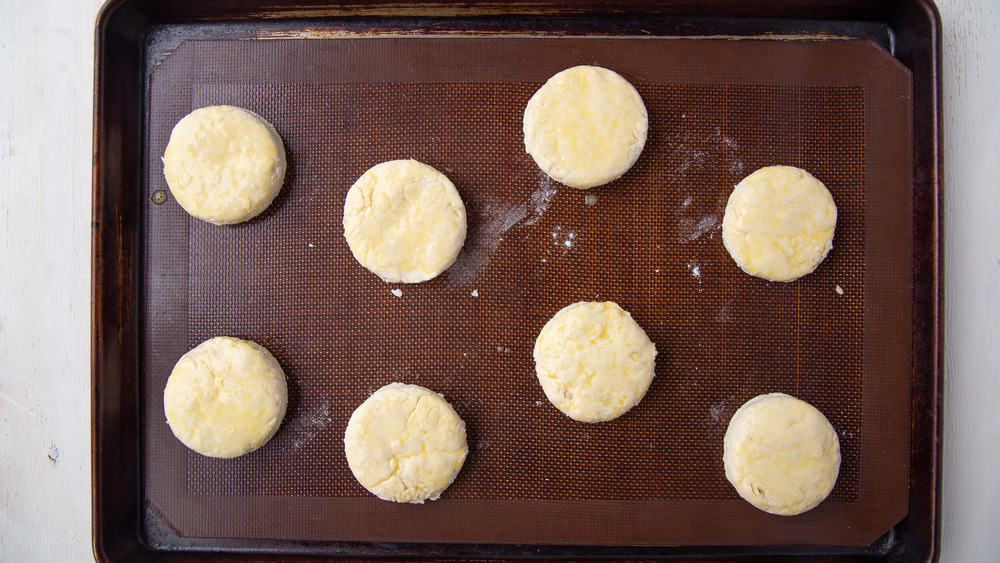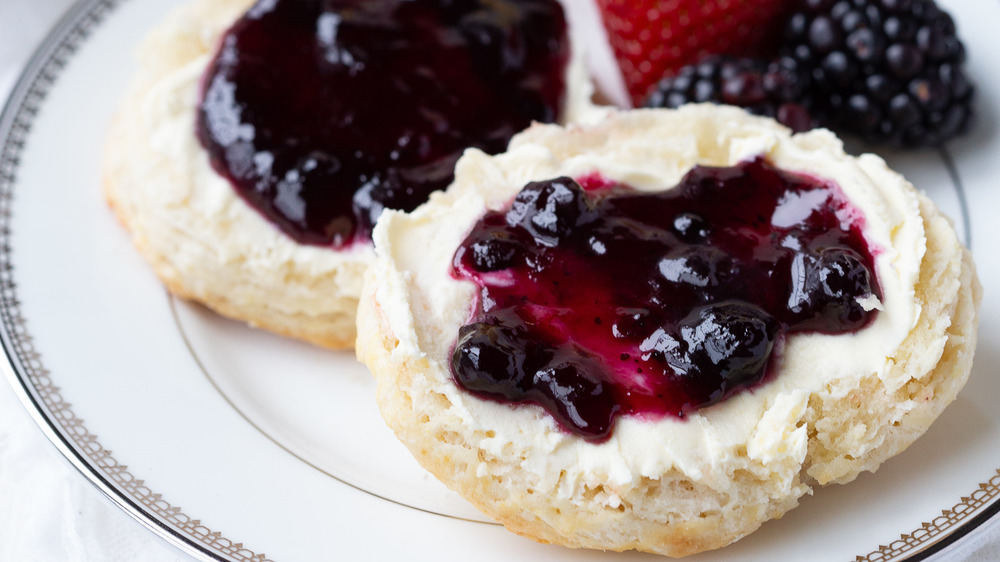British Scones Recipe
These elegantly simple, refreshingly easy-to-make British scones are a baked good you'll want to make again and again. The recipe is quick to prep and the resulting scones are delicious and versatile. "Scones are a great afternoon snack on their own, or with a cup of coffee or tea," says Kate Shungu, chef and writer behind the food blog Gift of Hospitality. "They would also make a great side dish for brunch, alongside a quiche, bacon, and fruit salad. If you're serving them for brunch, you can make a mini version by using a smaller biscuit cutter.
These scones are hardly some highfalutin baked good relegated to the fully-stocked kitchen of some patrician manor house a la Downton Abbey. Almost every home chef who keeps baking basics on hands will have everything they need to make a batch of these British scones. Even better, this is a process that should take all of a half-hour from the start of prep to the first bite. So, let's roll up our sleeves and pat out some jolly good scones.
Gather your British scones ingredients
These right good British scones require just six basic ingredients, but optional serving options like jam, clotted cream, or even more butter are welcome. You'll need two cups of flour, a tablespoon of baking powder, a half teaspoon of salt, two tablespoons of granulated sugar, one stick of cold unsalted butter, three-quarters of a cup of milk (also chilled), and one beaten egg.
"If you'd like a sweeter scone," says Shungu, "you could add a half cup of mini chocolate chips, currants, or raisins to the dough. To make this recipe gluten-free, you can substitute a cup-for-cup gluten-free flour in place of the all-purpose flour. And you don't have an egg, just skip the egg wash on the top, or brush the tops with heavy cream instead."
Preheat and mix dry ingredients for British scones
Preheat your oven to 400 degrees Fahrenheit and prepare a baking sheet by lining it with parchment paper or foil. If you have a clean, nonstick tray, you can skip the lining. Either way, it's best not to use a cooking spray here, as that will likely affect the flavor and consistency of your scones and can even damage your cookware.
Place the flour, baking powder, salt, and sugar into a large bowl and use a whisk to combine them completely. If you happen to be whisk-less, a fork will do just fine here, too. Whatever you use, make sure everything ends up well blended.
Make your dough for British scones
Now you'll see why it's critical to chill your butter! Grate the chilled butter on a box grater or, alternatively, chop it into pieces in a food processor. Now, add the butter to the flour mixture and stir gently with a spatula to combine. Pour in the milk and mix just until a shaggy dough has formed.
Also, note that cold ingredients are about more than easily chopped butter. Shungu says that "The key to flaky scones is having cold ingredients. When the cold ingredients meet the hot oven, it creates those beautiful flaky layers. Make sure that the butter is cold and the milk is straight from the fridge. Also, handle the dough as little as possible, as the heat from your hands can warm up the dough."
Form the dough, cut out scones, and bake
Sprinkle additional flour on a clean work surface, ideally a smooth countertop, and then dump the dough out onto the flour. Pat the dough into an eight-inch disc about three-quarters of an inch thick. Don't use a roller, as that could blend the butter too well into the dough and ruin the finished flaky texture.
Dip a two-and-a-half-inch biscuit cutter in flour and then cut the dough into rounds. Alternatively, use a drinking glass with a similar diameter opening in place of a biscuit cutter. Place the rounds on a baking sheet and brush their tops lightly with beaten egg.
Bake at 400 degrees Fahrenheit for 12 to 15 minutes, or until the tops are golden brown. Let the scones cool slightly, split in half, and serve with clotted cream and jam. Or bacon and eggs. Or honey. Or, really, whatever sounds best to you. Please note that, when frozen, the scones will keep for several months. When you're ready to enjoy them, just let the scones thaw before re-heating them in the oven at 350 degrees Fahrenheit for about five minutes.
What's the difference between American and British scones?
"British scones aren't traditionally very sweet, since jam gets spread on top. They're more like a Southern biscuit than many American scones," says Shungu. Basic British scone ingredients are simple and used carefully, as the scones are something of a template on which flavor is added later.
According to Chef Andrea Geary of Cook's Illustrated, the main difference between a British and American scone is "really about the butter [....] A true British scone is not as buttery. Not because the Brits are nutritious, but because in Britain you don't put a lot of butter in because you slather butter on it when you eat it! By the same token, you don't put a lot of sugar in it but you pile jam on top." American scones, by contrast, incorporate far more butter into the dough. And no matter what side of the Atlantic you're on, Geary says, somewhere is sure to think you're saying the word scone incorrectly.
These British Scones Are Just What Your Breakfast Needs
Almost every home chef will have everything they need to make a batch of these British scones. So let's roll up our sleeves and pat out some jolly good scones.
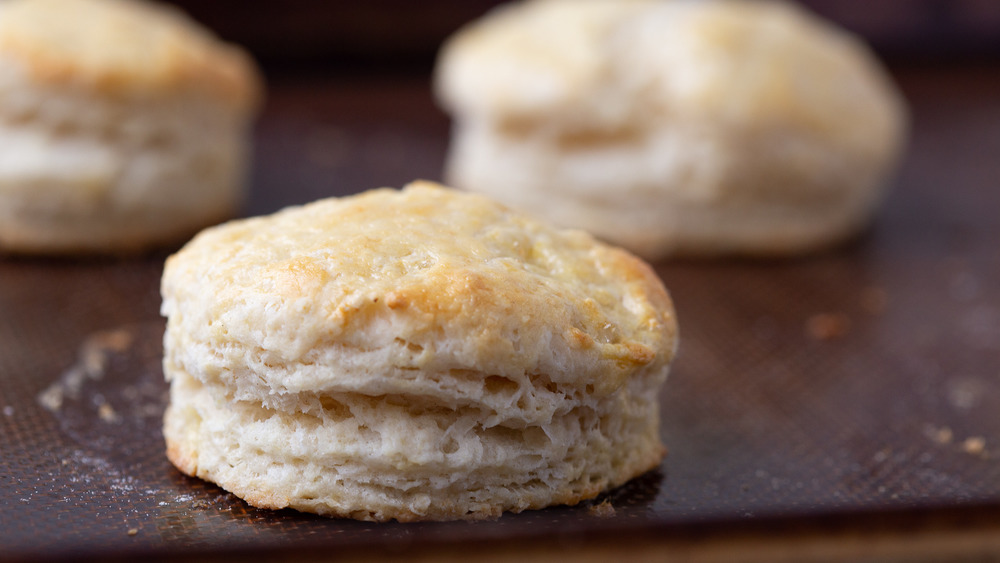
Ingredients
- 2 cups flour
- 1 tablespoon baking powder
- ½ teaspoon salt
- 2 tablespoons granulated sugar
- ½ cup (1 stick) unsalted butter, cold
- ¾ cup milk
- 1 egg, beaten
Optional Ingredients
- Fruit jam and clotted cream for serving
Directions
- Preheat oven to 400 degrees Fahrenheit. Place the flour, baking powder, salt, and sugar in a large bowl. Whisk to combine the ingredients
- Grate the butter on a box grater or use a food processor or sharp knife. Add the butter to the flour mixture, and stir gently with a spatula to combine. Pour in the milk and stir just until a shaggy dough has formed
- Sprinkle additional flour on a clean work surface. Dump the dough out onto the flour and pat the dough into an 8-inch circle, about ¾ of an inch tall
- Dip a 2½ inch biscuit cutter in flour. Alternatively, use a drinking glass with a 2½ inch diameter opening. Cut the dough into rounds using the cutter or the glass.
- Place the rounds on a baking sheet. Brush the tops lightly with a beaten egg.
- Bake for 12–15 minutes, or until the tops are golden brown. Let cool slightly, split in half, and serve with clotted cream and jam.
Nutrition
| Calories per Serving | 200 |
| Total Fat | 10.5 g |
| Saturated Fat | 6.3 g |
| Trans Fat | 0.4 g |
| Cholesterol | 42.2 mg |
| Total Carbohydrates | 22.8 g |
| Dietary Fiber | 0.7 g |
| Total Sugars | 3.5 g |
| Sodium | 146.1 mg |
| Protein | 3.8 g |
